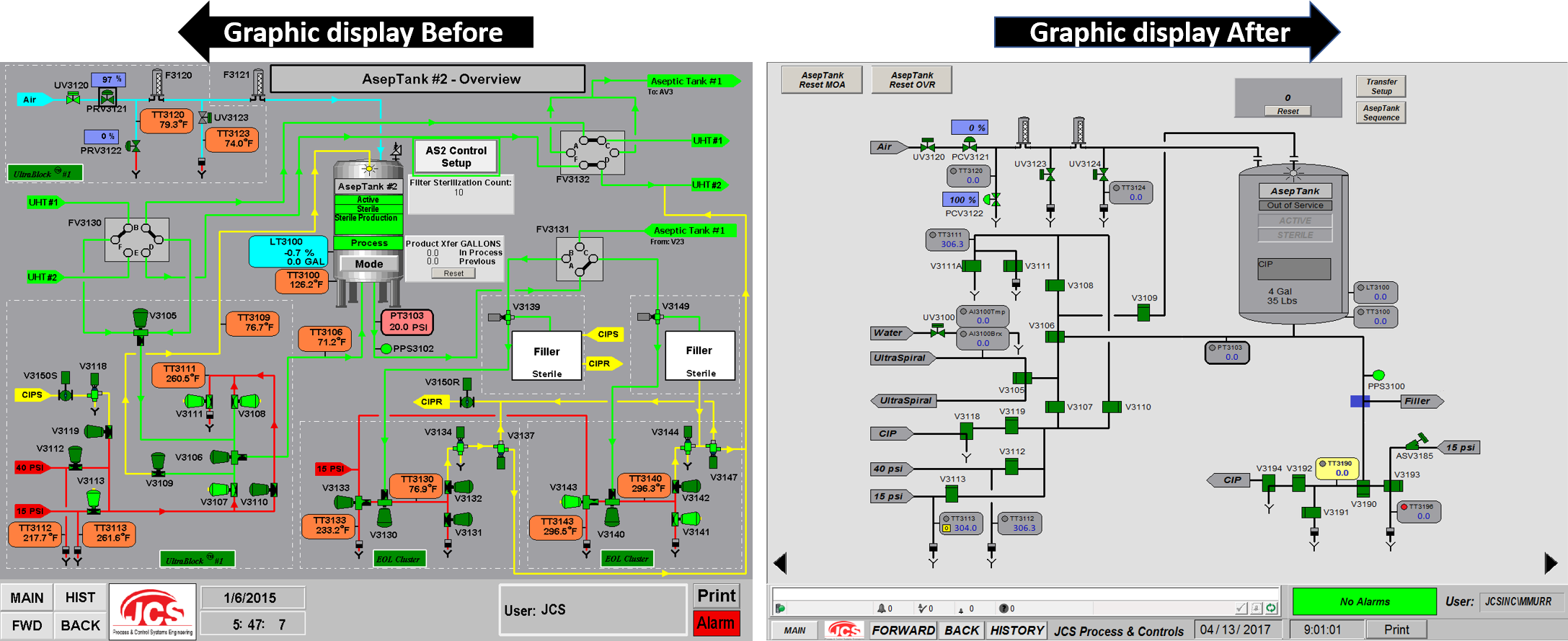As plants develop and grow over time, they must continuously deal with the need to maintain and update their assets. Process control systems are one of those assets that must be evaluated regularly for any potential risk to operations as it approaches or passes obsolesce. While control systems can, and often do last well beyond their expected lifecycle, the question becomes what is the risk when an HMI fails, but there is no replacement available for it? Or if there is a replacement available, how long will it take to receive, configure, and install the new HMI? You can keep replacements in stock, but if there are several platforms involved, the costs to stock spares can start to add up, and this may not be the best use of your dollars. Keeping up with current HMI platforms ensures not only that replacement parts are readily available, but in the case of thin client technology makes replacing an HMI on the floor almost trivial.
A recent customer, a large dairy operation, was looking to reduce risk by updating and consolidating their aging HMI platforms. The existing plant controls consisted of several standalone HMIs developed in various platforms. Each HMI station was PC based and configured to run applications independently of each other. When the plant made the decision to invest in upgrading their existing RS View 32 applications to FT View SE, they also took the opportunity to port existing Wonderware applications to FT View SE and merge them into the new common platform.
The JCS solution included a new Stratus server sized to host multiple virtual machines. The Stratus server provides a high level of fault tolerance as well as an online health monitoring service. The monitoring service not only alerts appropriate personnel of potential issues but can also automatically order replacement parts for delivery to site when components fail the built-in diagnostic testing. Also, this server client implementation synchronized to a centralized database puts all your operational data in one location for updating and reporting.
The virtual machines on the Stratus server were configured to run FT View SE server and Thin manager, as well as FT Transaction Manager, RS Studio 5000, and other supporting software packages. The existing PC based HMIs were replaced with new thin clients connected to the common HMI Server. The content available to each of the thin clients is determined by who is logged in at the terminal.
The goal of reducing risk due to aging hardware has been met with a new system that not only provides the customer with a robust, fault tolerant HMI solution, but also one that is easier to maintain. The system has been sized to allow future growth as the plant expands and should provide many years of reliable service.
Have you lately been thinking of migrating from RS View32 to FactoryTalk View? If not, it is time to start considering it.
One of the major reasons of migrating from RS View32 is the fact that this software will become obsolete at some point in time. RS View32 only runs on operating systems to an including Windows 7, but on January 2020 Microsoft will be dropping support. Don’t wait and call us today to discuss your contingency and migration plan!

The image on the left shows an AsepTank and a UltraBlock graphic display at the time we stopped the continuous improvement process on RS View32 libraries. Whereas the image on the right shows the same process depicted using our latest FT view libraries. The display conveys additional info by illuminating sensors yellow to indicate the system is holding for a specific value at the sensor. There are also small indicators to show sensor health and if the device is in an override condition.


